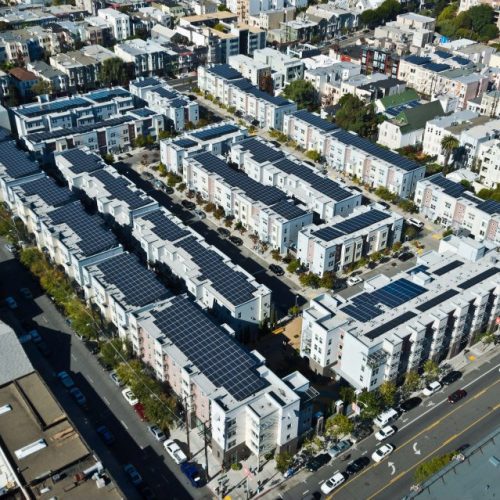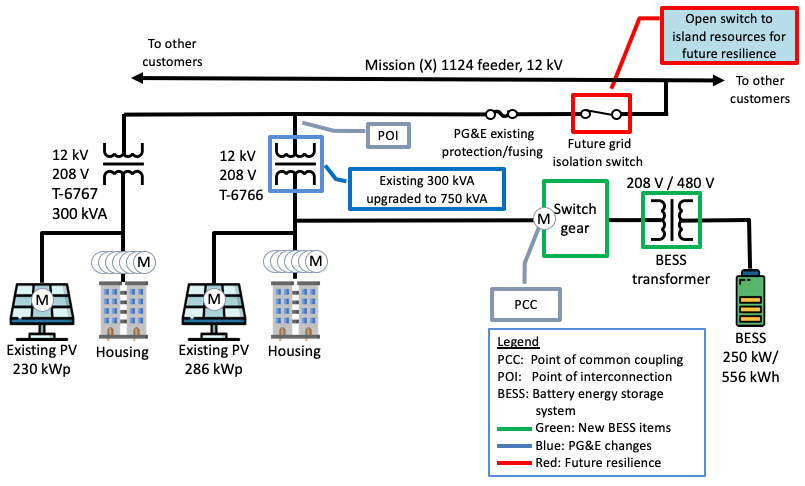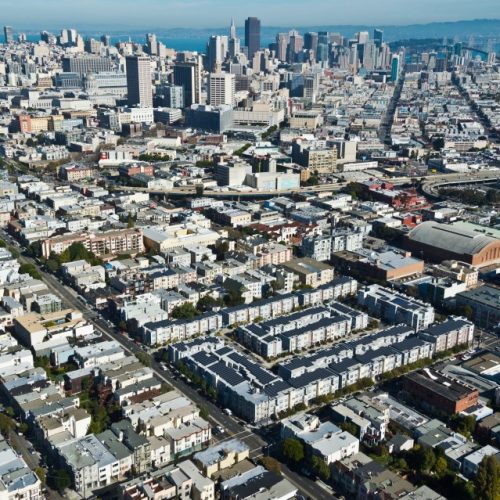The Clean Coalition is leading the Valencia Gardens Energy Storage (VGES) Project. This groundbreaking project, located in a low-income and senior housing community in the heart of San Francisco, will showcase how front-of-meter (FOM) energy storage can be effectively deployed in dense, developed urban environments.
Key features:
- Staging to become the first FOM merchant energy storage project in California.
- Sited at the Valencia Gardens Apartments (VGA), a low-income and senior housing facility with 260 units and 516 kWdc of solar on a feeder with a total of 580 kW of solar, exceeding the feeder peak load of 570 kW.
- Originally designed to deploy two 548 kWh battery energy storage systems (BESS), now modified to deploy one 556 kWh BESS; sized to provide indefinite solar-driven backup power to the most critical loads during grid outages.
- Designed to enhance the interconnection hosting capacity of the existing feeder by at least 25% and ensure that far more solar can be sited on that feeder.
By demonstrating how targeted deployment of energy storage can increase the grid’s ability to handle greater amounts of distributed solar, VGES will set the stage for increased deployment of clean local energy in California and beyond.
Download a 2-page overview of the VGES Project (PDF)
Download the VGES interconnection case study (PDF)






